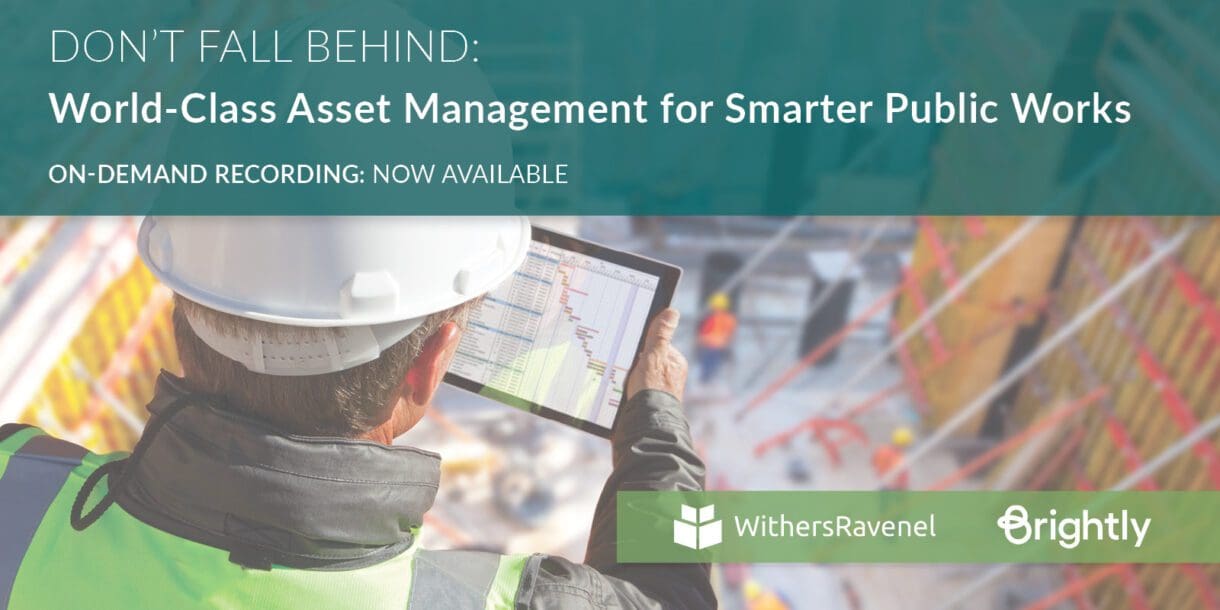
Hurricane season is upon us, and with that comes an increased risk of potential structural damage and flooding. Those affected by such natural disasters often wonder what financial hurdles will arise and impede their operations. In the past decade, billions of dollars were spent on overlapping federal disaster declarations, but as in the case of many communities, funding remained unclaimed or underutilized.
On June 15, WithersRavenel and Brightly sponsored “Don’t Fall Behind: World-Class Asset Management for Smarter Public Works” to address these concerns. With unprecedented levels of funding available, WithersRavenel’s Mary Glasscock and Brightly’s Luke Anderson discussed how local governments and public works professionals could implement strategic asset plans for positive impacts on grant-funded infrastructure projects. During their conversation, the presenters included an overview on the impact on both short and longer-term disaster recovery grants and how these strategic plans influence local buy-in and related supplemental funding.
Mary has significant experience managing federally funded grant programs for infrastructure projects. Most recently, she worked in leadership roles in state government, managing $20 million in Community Development Block Grant Disaster Recovery (CDBG-DR) infrastructure funds and $1.7 billion in FEMA Public Assistance (PA) projects including COVID-19 funds.
Meanwhile, Luke focuses on both sides of the asset management world, day-to-day operations, and long-term strategic capital planning for Brightly. In addition, his current role as Strategic Consultant allows him to consult with civic leaders helping to establish clear and justified capital plans.
Watch this web event (see link at the top) to hear how your team can:
- Create and execute a strategic plan for managing your infrastructure
- Maximize productivity and transform your day-to-day with automated workflows and mobile technology
- Save time and money through preventive maintenance
- Prioritize projects based on the Likelihood of Failure and Cost of Failure
